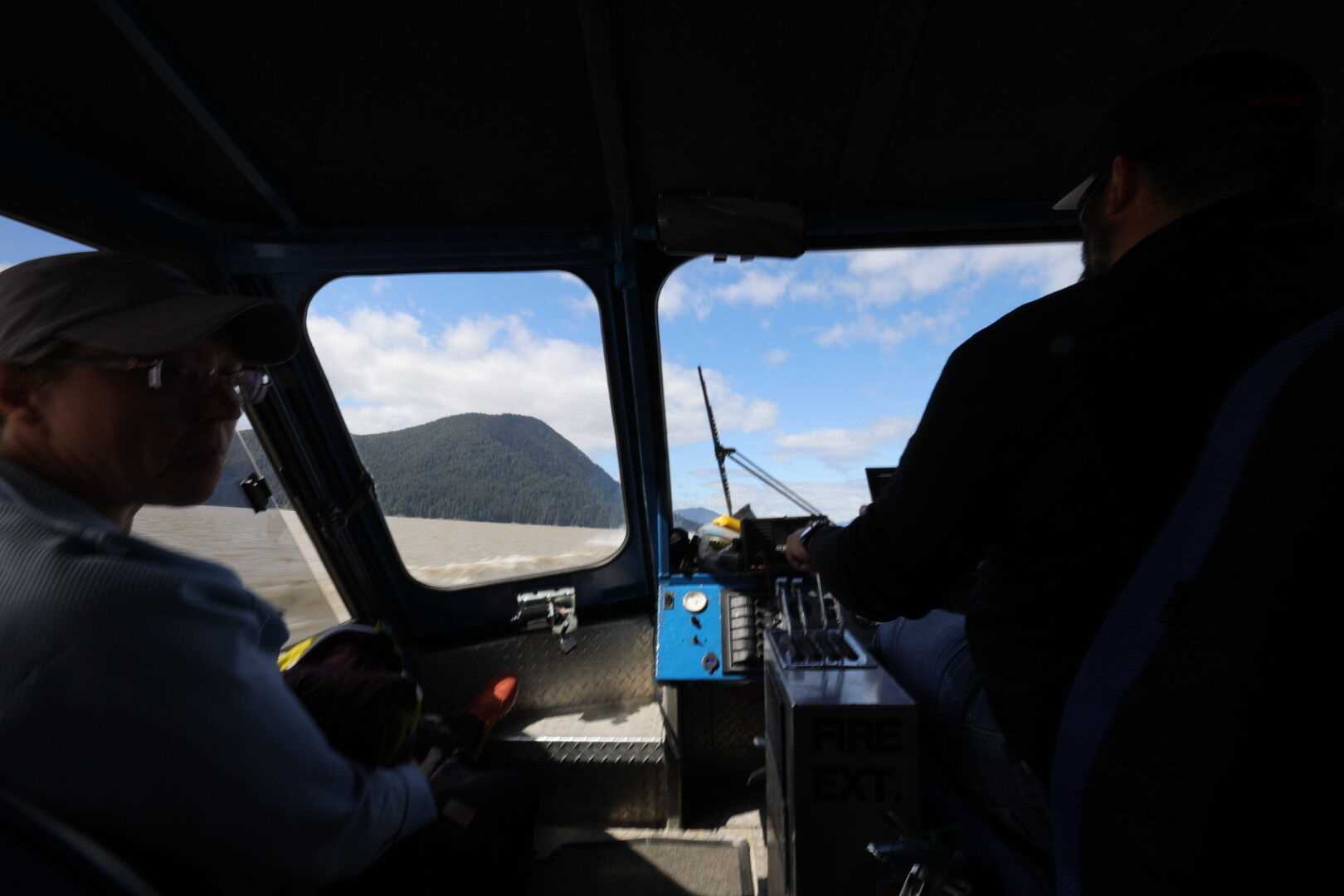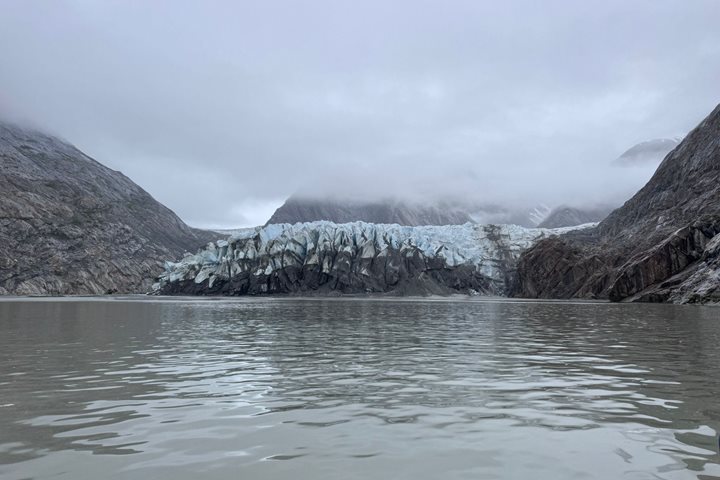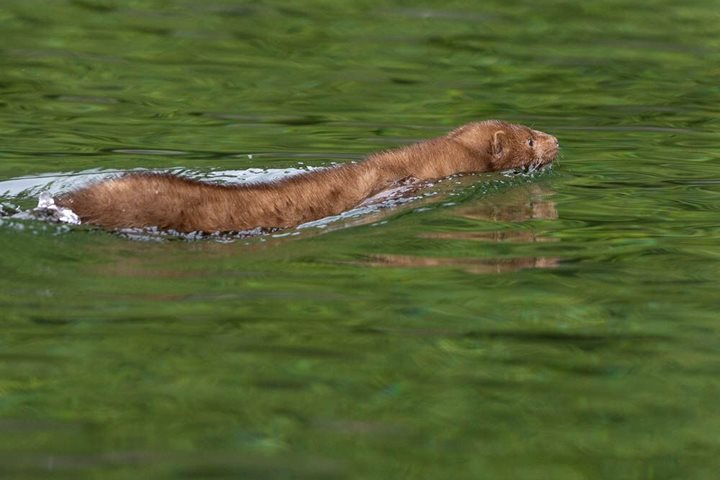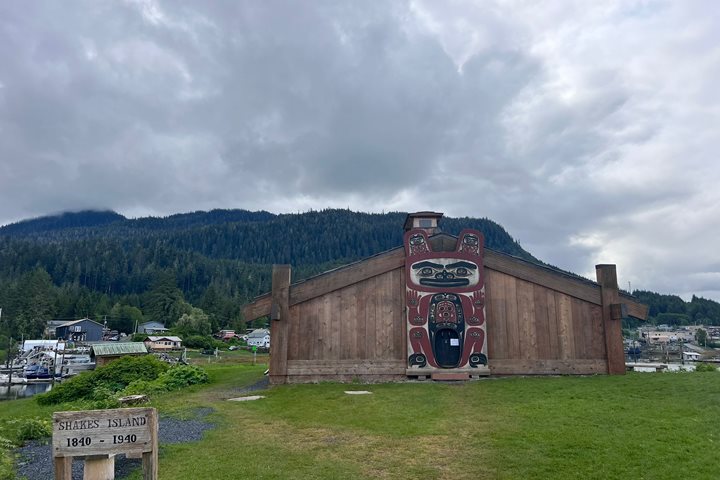Chief Shakes Tribal House is located on Shakes Island in the middle of Reliance Harbor. It is a replica of the traditional Tlingit clan house of the Naanyaa.aayi Clan. Every plank in the house was carved with traditional Tlingit carving methods by master carvers assisted by trained local apprentices. The intricate posts in the interior of the house are replicas of the originals. Our guests watched a dance performance and listened to a clan member as she spoke about cultural traditions and told us the story of the “Lake Monster,” which has been passed down through generations.
Wrangell is famous for deposits of almandite garnet, occurring in schists near the mouth of the Stikine River. Only children are permitted to collect and sell the garnets. This is allowed in hopes of fostering an entrepreneurial spirit and a sense of stewardship.
The afternoon found us skimming the shallow waters of the Stikine River Delta towards Shakes Lake and Glacier. It was a scenic trip on a beautiful day.







